Well, that’s what we’re going to take a look at in this blog article. Keep on reading as we explore 5 reasons why food is important during these happy and festive moments!
Key Takeaways
- Food is an important part of many celebrations and plays a significant role in cultural and social traditions.
- Food often symbolizes and commemorates special events or milestones, such as weddings, birthdays, and religious holidays.
- Food can also convey meaning and communicate and honor traditions, cultural values, and beliefs.
- Food can also be used as a way to express creativity and artistry, with many chefs and home cooks using their skills to create visually stunning and delicious dishes.
Why Celebrations Are Important In Our Life
Before anything else though, why DO we have celebrations? Why is celebration important?
Well, if you think about it, here are some good reasons to celebrate:
- It’s a great “excuse” to bond with friends and family members who you haven’t seen for a long time. We’ll get to connect with them again on deeper levels or simply catch up. That’s actually good for your health!
- Celebrations also serve as significant milestones in our lives. Every birthday, every anniversary, every baptism makes us appreciate how far we’ve come, agree?
- Celebrating things also helps us to create amazing memories that we can look back to and enjoy. And believe it or not, good memories help you get through tough times! That’s why you should collect as many positive memories as possible.
- To celebrate is to have fun! It’s that simple. People need fun in their lives, including you! Yes, it’s backed by science.
The great thing about celebrations is that you don’t have to reserve them for big happenings or for holidays. You can celebrate even just a win, whether it’s at work or something personal. Just go cook something up, bring people over, or invite them to come over, and enjoy!

Now, going back to the main topic: what is the importance of food in these happy moments?
Food in Celebrations: Religious Reasons
So why is food used in celebrations? Well, one is because of religious reasons. Religious moments throughout history have happened with food serving as symbols to commemorate these events. For example:
- In Jewish culture, the Passover Seder is celebrated with symbolic foods such as matzah, bitter herbs, and wine. Each piece is used to represent the story of the Exodus of the Israelites from Egypt.
- In Christian tradition, bread and wine, used by Jesus Christ to symbolize His boy and blood, are used symbolically at every mass or during special feasts.
- One of the most important celebrations in China is the Mooncake Festival. It’s a celebration of the rice harvest and many fruits. The role food plays here is important: eating mooncakes! That’s to achieve a reunion with families and happiness for the year.
In short, specific foods represent important events for different religions and cultures.
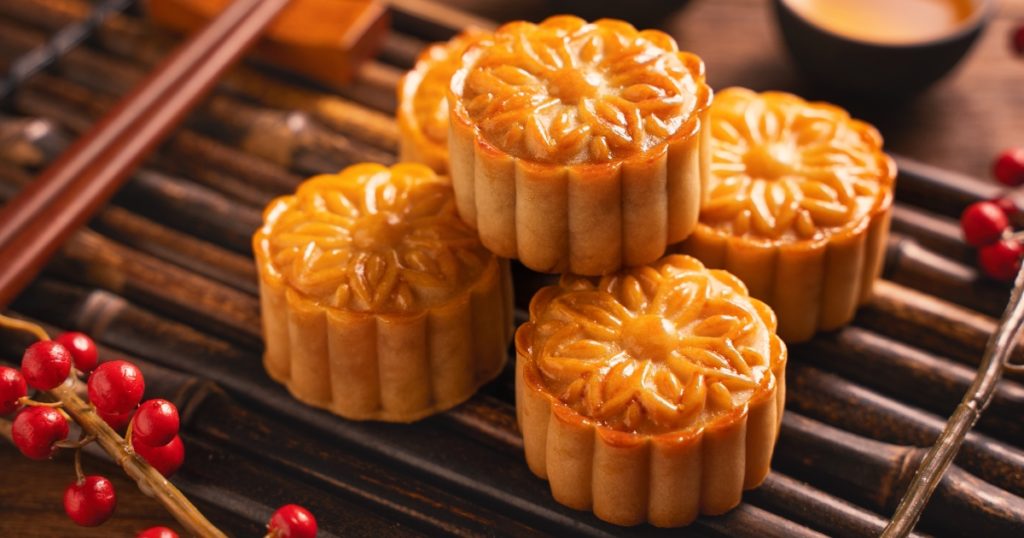
Food in Celebrations: Another Reason To Bond With Loved Ones!

The importance of food in celebrations is rooted in the fact that food is often shared with family and friends. People need to eat to live, after all. What better way to bring people together than to invite them to a gathering with food?
And of course, who else will you invite to a gathering with food other than people you like to hang out with? You’ll get a space for bonding and connecting with them and will bring you closer to one another. Remember that next time when you get invited to a birthday: you’re not just there to eat some birthday cake but to really hang out and build better relationships with the people there.
Food in Celebrations: Psychological Benefits
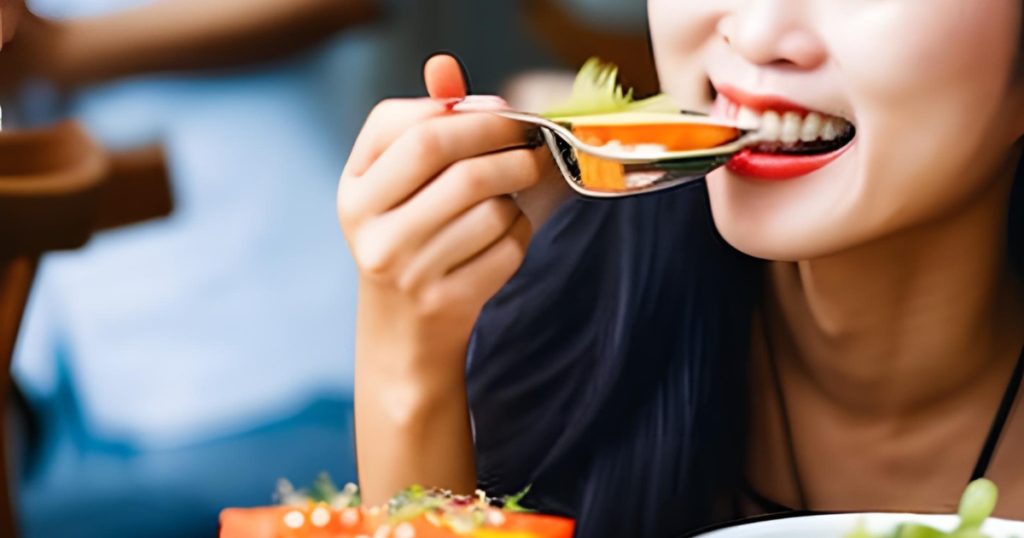
Here’s another role foods play in celebrations. When you eat some good food, aside from filling your tummy, don’t you feel good? Having good food just makes you feel even better during a special event!
The science behind this is that eating food releases “feel-good” chemicals in your brain, like serotonin. That helps you relax and actually enjoy the party or event, aside from bonding with your loved ones.
Plus, you’ll be able to associate delicious food with good memories. And as mentioned above, that helps you deal with any negative events that may happen in the future.
Food in Celebrations: Honoring The Culture
Why are cultural celebrations such an important part of society? Why is food important in culture? That’s because food is an important part of a person’s or country’s culture. For example, Singaporeans identify with hawker food as a part of their culture.
Cultural celebrations are important because they allow people to celebrate and show pride in their cultural identity. When people serve food from their culture during celebrations, it’s a way of sharing and preserving their cultural heritage.
Celebrations also provide an opportunity for people to showcase their culture to the world, promote and preserve traditional recipes and customs, and keep them alive for future generations. For example, the taco is a symbol of Mexican culture and by serving them during celebrations, Mexicans can share their cultural identity with others. The same goes for any country!
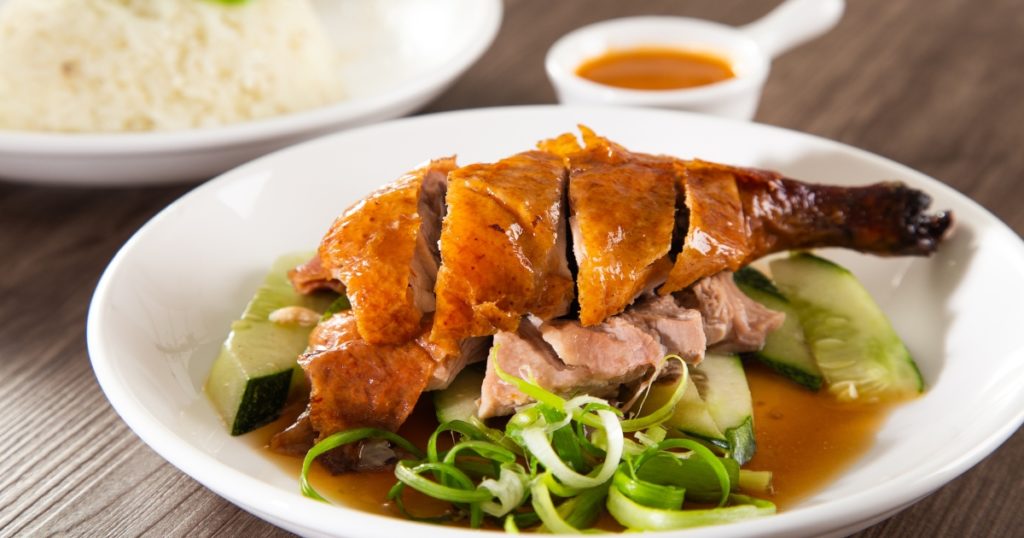
The Last Reason: Just Because They’re Delicious!

Sometimes, we don’t have to think too much about the role food plays in celebrations. It’s enough that they taste good, and we want to eat yummy things! Life is too short to not enjoy it, and it’s okay to simply have a good time eating food during these occasions.
Food is a source of pleasure, and celebrations are a time to enjoy and indulge in the foods we love. It’s that simple.
Want to eat and make food that will really make you celebrate?
Has reading this made you want to put an event together and have a celebration? Well, you can do that with our classes here at The Bailiwick Academy! And if you’re looking for a particular one that brings “foods and celebrations” in one class, we’ve got you!
Check out our latest class by Chef Him Uy De Baron: Celebration Trays!
In Chef Him’s latest class, you’re going to learn to make four amazing dishes that are great for parties and other special occasions:
- Polla Ala Brasa: A chicken dish with the rich and distinctive flavors of Peruvian cuisine. It is a succulent and juicy roasted chicken with a distinct and bold flavor. It comes with three amazing sauces, too!
- Braised Beef Paella: No Pinoy celebration is complete without rice–and that’s where this Braised Beef Paella comes in! It’s a flavorful melange of tender beef chunks, rice, and crisp vegetables. This dish comes with a side of roasted bone marrow, too!
- Fish and Chips: This iconic English dish has many versions–and Chef Him can show to two ways to make it. Choose from the crumbly and tasty Butter-Crumbled Fish and the crispy on-the-outside and pillowy on-the-inside Beer Battered Fish paired with a Greek Salad and some crispy “chips.”
Enhance your upcoming celebrations with a curated selection of exceptional dishes that are perfect for special gatherings–and your food business! Sign up at The Bailiwick Academy today and start making your parties’ dishes unforgettable!
—
Keep coming back to The Bailiwick Academy blog for more kitchen tips, tricks, and much more!
]]>Oh wait… you’ve completely forgotten about Halloween?
Well, we can’t blame you! After all, Christmas IS a happier occasion to think about. Plus, you won’t hear any Halloween songs being played in malls or wherever you go.
But while we Filipinos don’t exactly do apple bobbing or carving faces on pumpkins, a lot of us still do Halloween traditions. For example, in a lot of malls, villages, and condominiums, kids are encouraged to dress up in their favorite costumes and go trick-or-treating.
Adults aren’t left out of the fun either, as for instance, local promoter PULP Live World is hosting a Halloween party featuring Korean acts CL and Epik High this coming October (you might be interested if you’re into Korean historical dramas or other Korean stuff!).
So you can be sure that various parties will be held for the occasion, whether in public or at homes. You might find yourself suddenly having to host one as your kids’ or your families’ request – or ever just because you want to.
And when you hold parties, you can be sure that you’re going to need food!
No idea what to serve to satisfy tummies while keeping in the Halloween spirit? Well, we got you! Keep on reading as we give you some delicious ideas you can do all from the comfort of your home!
Why are we talking about Halloween so early?
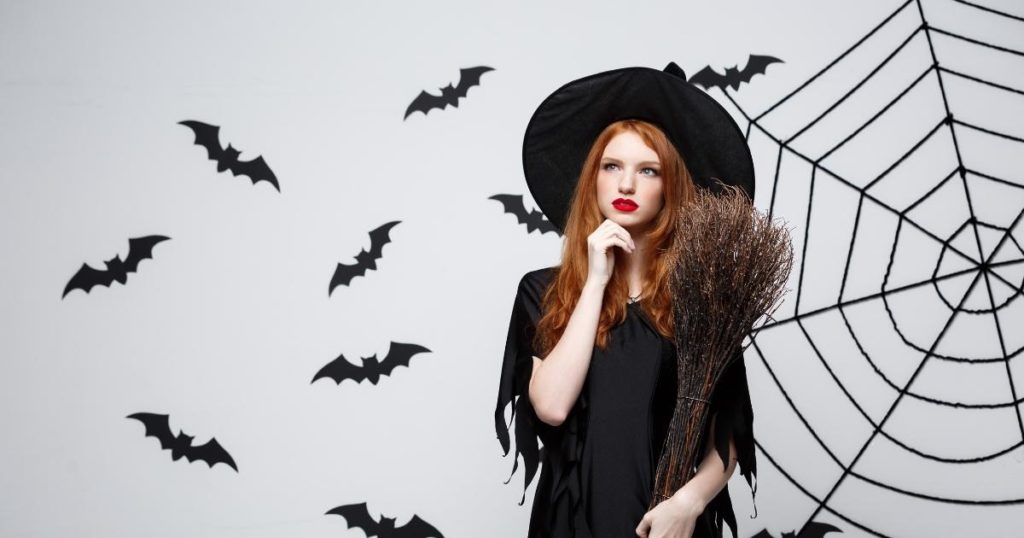
Now you might be thinking that Halloween is too far for us to be talking about Halloween-themed homemade food. But the truth is, while Halloween is still more than a month away, it’s not too early to be thinking about it at all!
Why?
Well, for one thing, if you ARE going to have a Halloween party, you don’t want to be planning too late. Otherwise, you might end up with a less-than-ideal menu.
Plus, if you’re running a food business, it would be good to get the word out that you’re ready for Halloween-themed food. That way, you’ll be top of mind when people think of where to get food for their parties!
Wait… what’s Halloween anyway?
Well, according to History.com, the concept of Halloween originated from the ancient Celtics. Every end of October, a cold and dark winter would occur, and for the Celts, they considered that period as the beginning of a new year.
They also believed that the boundary between the living and the dead would blur during this time, meaning that ghosts would roam the earth, damage crops, and generally cause trouble.
So why wear costumes during Halloween?
Since ghosts might also be vengeful spirits, people started to wear costumes to hide their identities and blend among the wandering spirits. That way, in case they had enemies who were ghosts, they could protect themselves. Thus started the tradition of costume wearing.
People in costumes eventually started to present themselves as representatives of those vengeful spirits. That’s why the phrase “trick or treat” came to be. Basically, if you didn’t give the spirit representatives a “treat” to placate the vengeful spirits, you would get mischief in exchange.
Over time, these traditions would become the elements that would consist of Halloween celebrations, albeit taken less seriously and in a more fun way – and not necessarily meant to be scary, either.
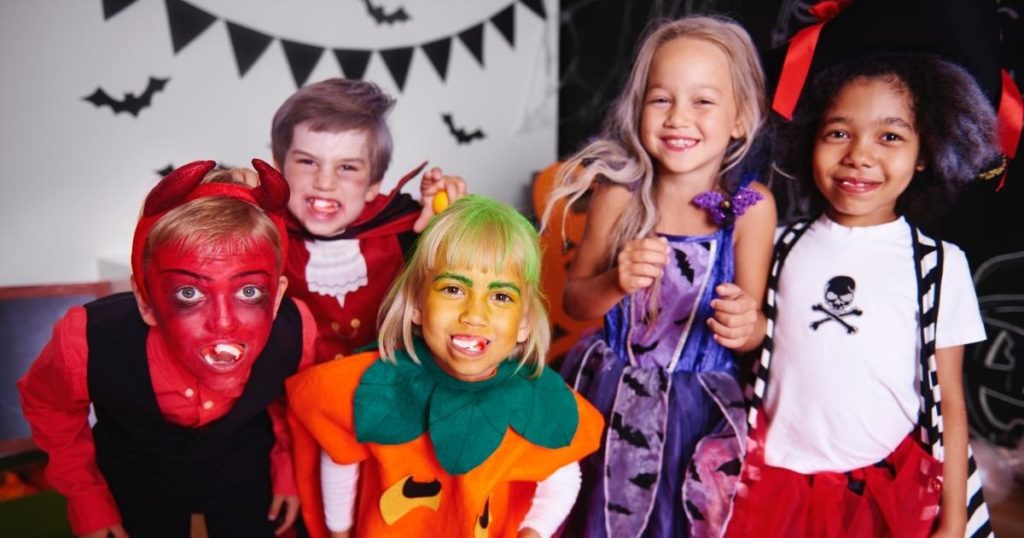
Okay, now on to the food! In no particular order, here come the homemade food ideas!
Halloween homemade food ideas: Finger foods
When we say finger foods, we don’t mean literal fingers! Finger foods are those literally eaten from out of your own hands. The term is just a fancy term for snacks, but we figured it’s more appropriate for the season.
These snacks can either be sweet or savory – anything to tide the eater over while waiting for the main course.
Halloween snack mix
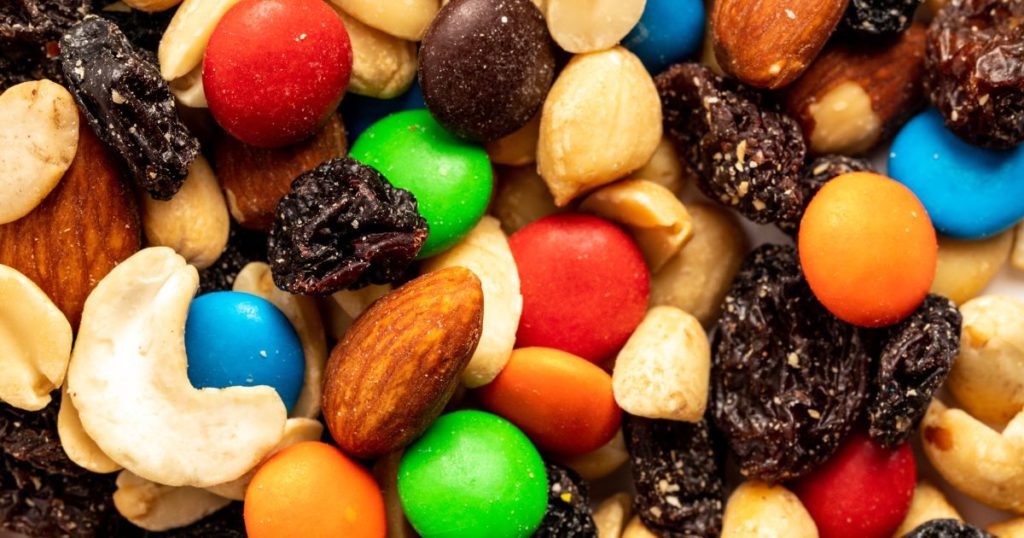
The usual favorite snacks of people can be popcorn, pretzels, candy corn… or if you want a healthy twist, why not try making your homemade granola? Check out Chef Joey Prats’ Fruit and Nut Granola class – it’s perfect!
Broas
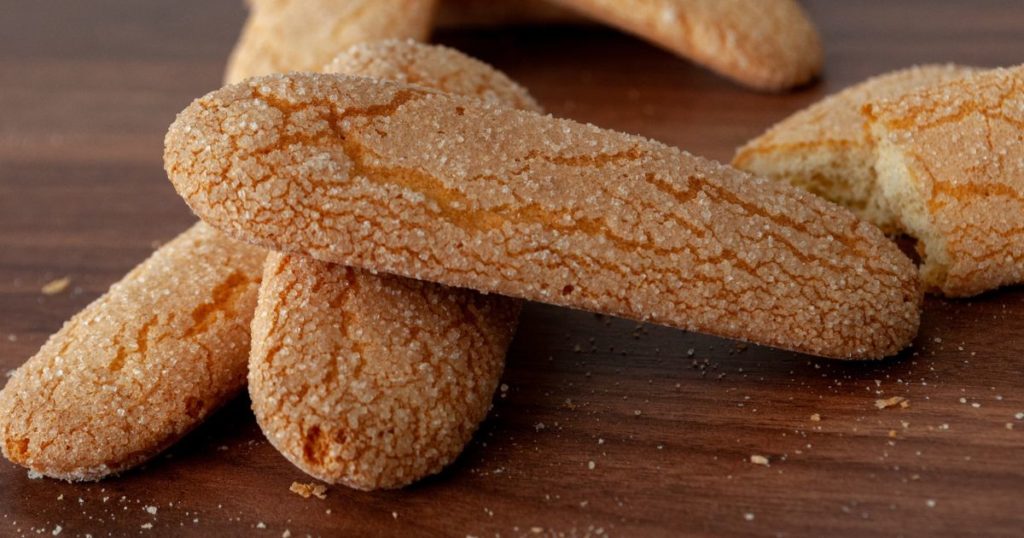
Another term for broas is “ladyfingers.” Appropriate for Halloween, wouldn’t you agree?
Just style around them to make them look like “fingers” or give people the idea that they can be a zombie for the night and eat human flesh.
And speaking of broas, you can find out the recipe for making really delicious ones when you enroll in Chef Jimbo’s Pinoy Pasalubong class.
Cheese dip and chips
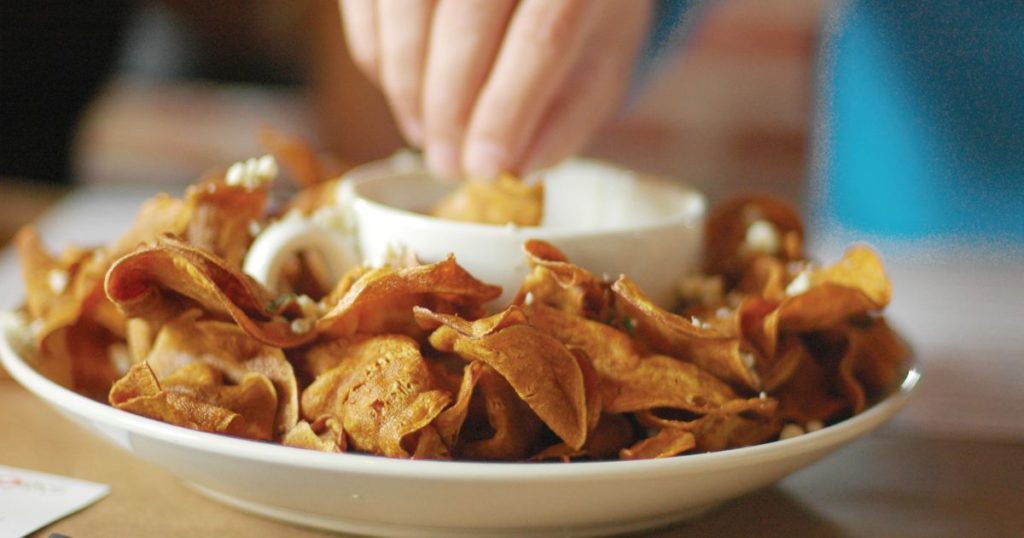
With cheese dip and chips, you don’t really need to overthink this. Maybe place the cheese dip in an orange or a black bowl, get some dark-colored chips, and poof! It fits the Halloween theme!
And for the best cheese you can ever taste, try our Quattro Formaggi Spread class by Chefs Miguel and Angel Prats!
Halloween homemade food ideas: Main courses
Of course for parties, people won’t necessarily get satisfied with just snacks! You’re going to need to serve them some actual food. Here are a few ideas:
Spaghetti with meatballs
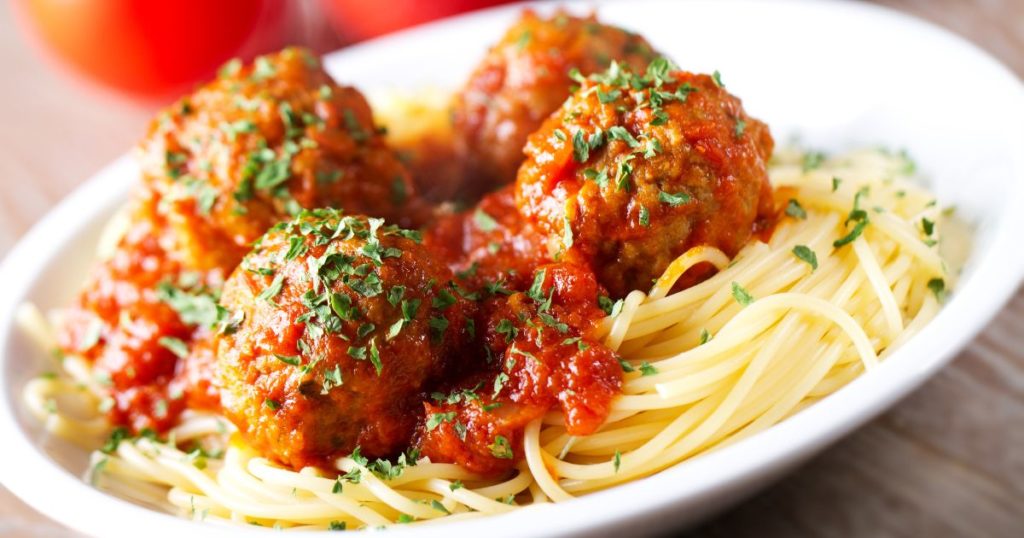
Make this classic pasta favorite spooky by making spaghetti and eyeballs instead! How do you make eyeballs? Just get cheese and olives and stick them to the meatballs and you’re done!
For one of the best spaghetti and meatballs recipes you can ever taste, enroll in our Pasta Master Class with Chef Joey Prats!
Barbecue baby back ribs
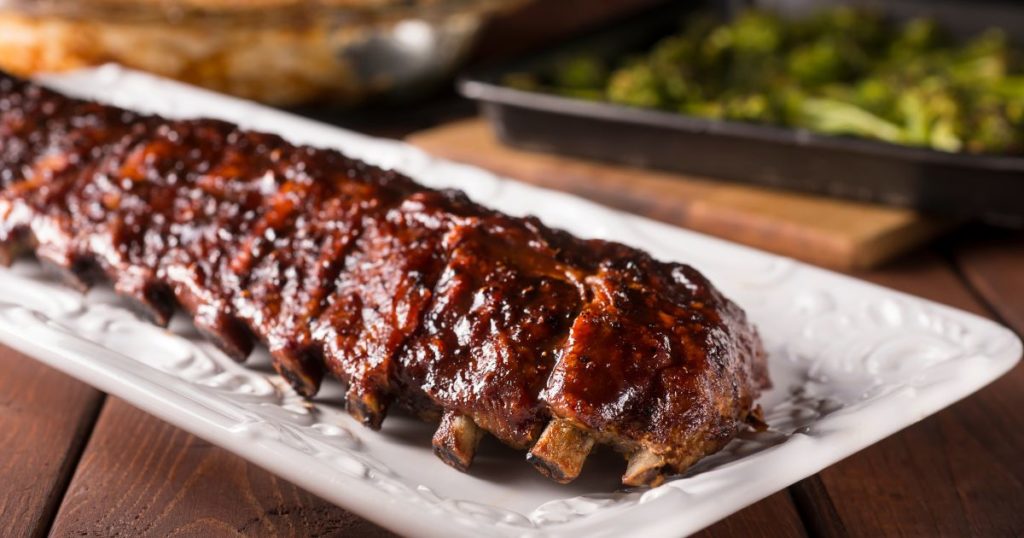
This gets a special mention because Chef Joey Prats called it “You have Died and Gone to Heaven Barbecue Baby Back Ribs.”
Get it? Halloween, died, Heaven…
Pretty appropriate for the occasion, agree? Enroll in this class and get to make the most scrumptious fall-off-the-bone oven-baked barbecue baby back ribs meal made extra special with a delicious, homemade dry rub and a luxuriously thick Kansas City-style barbecue sauce.
Halloween homemade pizza
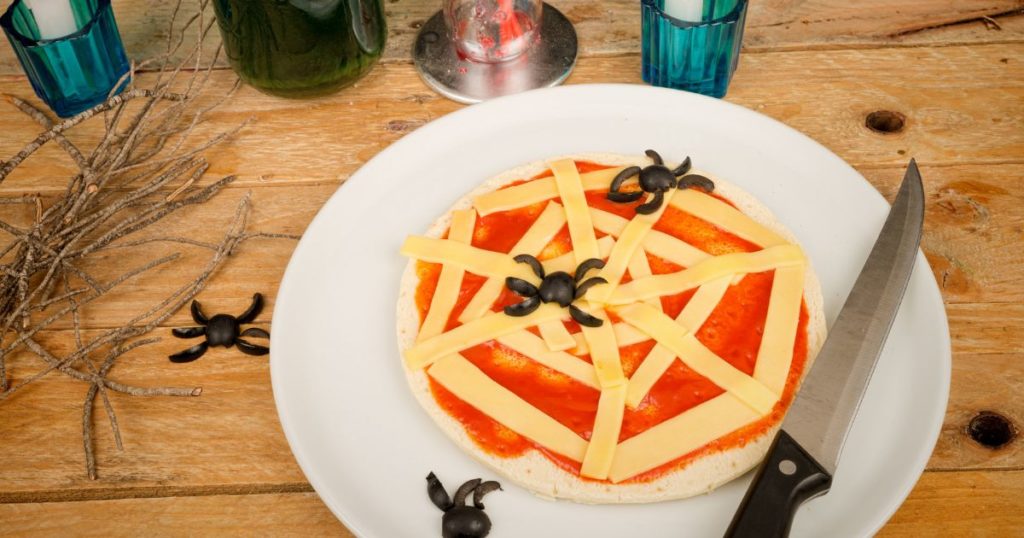
How do you make pizza spooky? It’s simple! Just decorate your pizza top with as much spookiness as possible. Just like the image, you can make a spider web pizza.
Another possibility is to shape your cheese into ghosts – either way, you get the perfect Halloween pizza.
And if you want a good Halloween homemade food idea, keto pizza is one of them! Learn how to make one in our Keto Italian Bakes class by Ms. Chiqui Dingcong!
Halloween homemade food ideas: Desserts
No meal is complete without dessert! Check out some of these Halloween homemade food ideas for sweet endings!
Floral-themed desserts

Flowers are appropriate for weddings and other special occasions, but you can make them fit into Halloween too. After all, we also bring flowers to graves.
Instead of making colorful floral desserts, why not make monochromatic flowers like black or white and make them toppings on cupcakes or for the actual edible flowers?
For floral cupcakes, check out our Flowers in Full Bloom by Chef Richelle Libunao. And for edible flowers, check out our Art of Edible Flowers class by Chef Marc Kevin Reyes!
Halloween cupcakes with icing
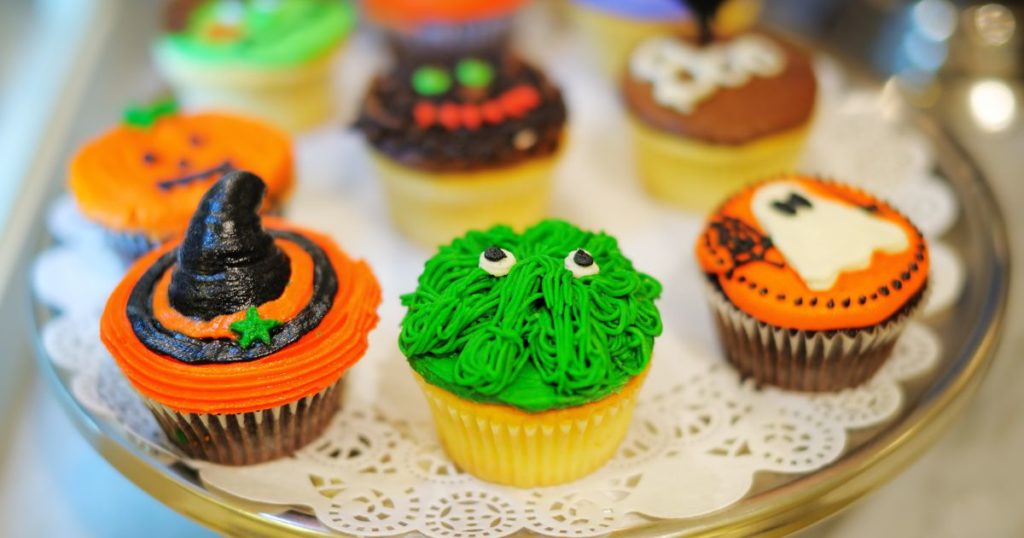
Halloween cupcakes are cute, nice, and well, easy to get in theme. Plus, no one doesn’t like cupcakes, right?
But if you have no idea how to make Halloween-themed cupcake icing, then enroll in our Colorflow Royal Icing Toppers by Chef Joey Montanez. You’ll be making your own spooky designs in no time!
Halloween cake
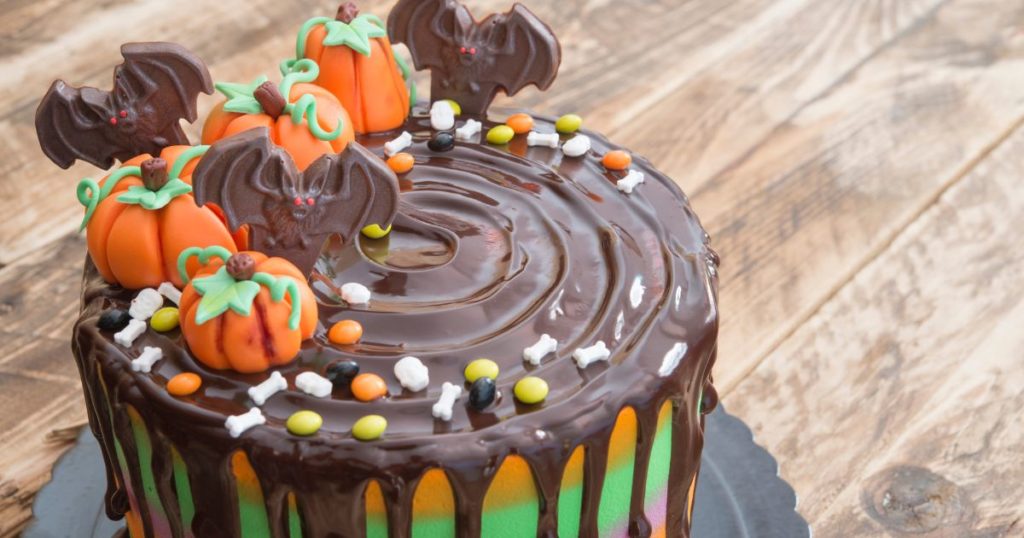
Halloween cakes can be decorated in any way and can be in any flavor. But why stop at ordinary when you can make EXTRAORDINARY Halloween cakes?
If you want a cake that’s literally gravity-defying, then enroll in our class with Chef Mayen Orido: Gravity Defying Balancing Toys Cake! Can you imagine making your own cake with floating ghosts, bats, and other Halloween-related elements?
Anyone who sees that cake is guaranteed to be impressed!
Check out more Halloween homemade food inspirations at The Bailiwick Academy!
We hope this blog has helped you get some inspiration for the food you will serve at upcoming Halloween parties. And take note that these ideas are just SOME ideas.
That means you can always come up with more of your own. And do you know the best way to do that?
Enroll in The Bailiwick Academy! We have more than 100 classes for you to choose from, taught by only THE BEST chefs and instructors in the country. Each class is easy to understand and to follow, guaranteed!
So what are you waiting for? Beat the Halloween rush and learn recipes for your Halloween homemade food as soon as possible (and come up with your own, too!). Sign up at The Bailiwick Academy today!
We promise that you will come up with amazing treats – and that the only tricks that will happen only involve making your food taste really great!
See you inside!
—
Keep coming back to The Bailiwick Academy blog for more kitchen tips, tricks, and much more!
]]>Well, if you’re into diving deep into food history as much as we are, you’ll enjoy this article! Check out this list of five popular food dishes and their origins. As the title says, you may be surprised at the unexpected sources.
(And if you happen to run into a food and their origins quiz in the future, at least you’ll know the answers to some questions! LOL.)
Food origins: Pasta

From how we mentioned this food in our intro, you know it’s going to have surprising origins already.
While we may automatically think of Italy when we start talking about pasta and pasta noodles, pasta history says otherwise. Pasta actually descends from China, which makes sense with all the noodles being eaten over there. The overall general belief is that the recipe for egg noodles got imported from China into Italy all thanks to the adventurer Marco Polo.
However, what is truly Italian about pasta is the Italians’ use of durum wheat. It made pasta noodles more affordable, versatile and also granted a long shelf life when noodles are dried. So if you really want to, you can technically say that pasta is still an Italian invention.
There are now many versions of pasta nowadays, like fast food spaghetti. But if you want to make a “pasta” that is truly Pinoy, you can check out our Classic Pinoy Favorites class with Chef Chona. You’ll be able to make an Espesyal na Pancit Palabok!
Croissant’s food origin is…

And if you guess it by now, yes, the French didn’t invent the croissants (although croissant is a French word, meaning “crescent”). The croissant’s first descendant is the Vienna, Austria treat known as kipfel or kipferl. It’s also a crescent-shaped bread that is served nowadays as a cookie.
The invention of the croissant that we know nowadays is attributed to August Zang, an Austrian artillery officer. He opened Boulangerie Viennoise in Paris back in the 1830s. The Parisians fell for the bread, and French bakers eventually made their own methods of doing this particular bread. Thus, the flaky French croissants we all know and love was born!
Want to make your own croissants? It’s easy! Just enroll in our Laminated Dough class with Chef Jimbo!
Where did sushi come from?

Here’s another of the popular foods associated with one country but originated elsewhere. Sushi is associated with Japan, but you can trace its origins back to China. It’s surprising food news, but it’s true!
According to Roka Akor, sushi was first called narezushi. It was simply fermented rice and salted fish. You didn’t even eat the rice with the fish before – it was only used to wrap and preserve the fish! Hard to think about, huh?
The narezushi spread to Japan in the 8th century, where its popularity bloomed, and got called sushi by the Japanese. Apparently, in 1852, there were one to two sushi restaurants for every 100×100 meter square block! So the Japanese are still responsible for popularizing sushi. We have to give them that.
If you love sushi as much as we do, it’s worth trying out our class with Chef Allan Mertola: Modern Sushi and Maki!
Food origins: Doughnuts

Thanks to pop culture, we usually associate these treats with a hole in the middle with the US of A. You know, cops with doughnuts, that sort of thing.
That’s why we were surprised that when it came to doughnuts, there were plenty of food origin stories!
For example, according to Britannica, there were already records dating back to the mid-19th century of the Dutch making them. They were called “olykoeks” or oily cakes, balls of cake fried in pork fat. The center of the cake wouldn’t cook as fast as the outside, so these pastries got stuffed with fruits or nuts, treats that didn’t need to be cooked.
Here’s another origin story. Elizabeth Gregory, a New England ship captain’s mother, was preparing deep-fried dough for the boat’s crew. Apparently, she was the one who thought of stuffing the dough with nuts. Also, she was the one who referred to the treats as “doughnuts.”
But according to her son, Hanson Gregory, he was the one who innovated the hole in the middle, in 1847. He wanted to remove the raw insides, so he punched a hole through the center with his ship’s tin pepper box. The hole made the doughnut able to be cooked evenly.
One final story is that Greece is where the doughnut really comes from. Over there, they’re known as Loukoumades: small doughnut balls covered in honey and walnuts. They’re also considered to be the oldest recorded dessert, dating back to the very first Olympic Games in 776 BC. The Loukoumades are presented to the winners as honey tokens.
A very popular food comes with three origin stories. Isn’t it amazing?
If you want to start your own doughnut origin story (or simply just make doughnuts), enroll in Chef Joey Prats’ Divine Doughnuts class!
Food origin of the Apple pie

There’s a saying: “As American as apple pie.” It means that whatever you are referring to with that saying is very American. But the ironic thing about this particular saying is that neither apples nor apple pies originated in North America. Oops.
For one thing, Apples are native to Central Asia. As for the apple pie itself? Well, apples weren’t the first thing that the English put in their pies. In medieval England, they put meat, and called a pie a “pye”.
The first apple pie was recorded in 1381 and was a far cry from the apple pie we know of today. Think of an apple pie, but mixed with figs, saffron, raisins, and pears.
We can argue that the Americans have perfected the apple pie. After all, they have made it one of their unofficial symbols.
And if you want to experience true apple pie perfection, enroll in our Fabulous Pies class with Chef Joey!
Final Thoughts
And those are five popular food items and their origins. Did any of them surprise you? Which delicious eats would you like to learn more about? Let us know in the comments!
Before you go, don’t forget to sign up at The Bailiwick Academy so you can learn to make some of the food on this list. You won’t regret it!
Also, keep coming back to The Bailiwick Academy blog for more informative articles about food, baking, cooking, business, and so much more!
]]>